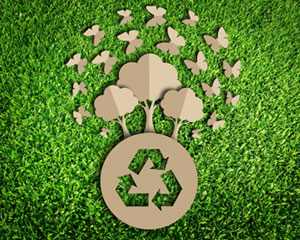Do’s and Don’ts of Recycling

Featured Image: iStock.com/vanatchanan
It’s no secret that recycling isn’t a piece of cake. It’s a complicated process, comprising of various steps. But for the average American, the recycling Journey starts from the front porch and ends at the recycling bin 3 metres away. It’s not that simple.
Recent statistics prove that 1 out of 3 Americans is doing recycling all wrong. This might come as a shock to some people, because…after all, what is there to recycling except throwing it in a green bin? That’s where the problem starts.
Doing a bit of research before you try to recycle can make all the difference. Follow these Dos and don’ts and start stepping towards a healthy E-life.
Do’s
1. Check for Local Requirements
All recycling plants are set up to handle different items, so check to make sure what can be collected in your area – specifically, which plastics can be recycled. It can speed up the process considerably!
2. Separate Your Items (When Required)
Some places ask for trash items to be separated into specific bins. Generally, all paper recyclables go together, with plastics in another bin, glass in another, and metals in another.
3. Recycle Plastic Bags Separately
Although plastic bags don’t go in to the main recycling bin, that doesn’t mean they aren’t recyclable they just have to be processed separately.
4. Remove the Grease
A lot of people believe that pizza boxes can’t be recycled. This isn’t quite true. Cardboard pizza boxes are recyclable, but the grease from the pizza is not. So if the top of your pizza box is all greasy and cheesy, but the bottom is clean, you can tear it apart, then toss the oily half in the trash, and the clean part in the recycling.
5. Separate Your eWaste
Electronics and other eWaste items can be recycled, but typically in a separate, secure collection area away from regular recyclables. If you aren’t sure where to find an eWaste recycling facility, you can check your city’s waste services website. There will be a bin available.
Don’ts
1. Bag Your Recycling
Plastic bags can clog the sorting machines in a recycling plant, which then take time and money to unclog. Fight the urge to bag your recycling, and simply dump it from your bin into the collection bin, instead.
2. Recycle Food
Food is compostable, but not recyclable. Make sure your food cans, bottles, and containers are clean of all food residue before putting them in to the recycling bin.
3. Put Trash In the Recycling
Just a few pieces of non-recyclable garbage can make the recycling plant deem an entire load as “trash.” So don’t ruin the recycling efforts of others!!
4. Recycle Toxic Containers
Toxic bottles need to go in the trash, and more often than not, they are supposed to be disposed of using hazardous waste procedures. Check your local plant’s rules for more specifics.
5. Put Yard Waste In the Recycling
If you are a homeowner, it may be tempting to fill up your recycling and garbage bins with tree trimmings and grass clippings after a big yard cleanup. But just like food isn’t recyclable, neither is yard waste.
Conclusion
Recycling can be a rewarding process, just make sure you follow these dos and don’ts and you’ll be able to make an everlasting impact by recycling!
About The Author Kelly Sampson
Kelly Sampson is a writer, blogger, and environmental enthusiast. She has strong opinions about climate change, the dogs vs. cats debate, and Oxford commas. She has lent Hummingbird International her engaging and spirited voice and turned our blog into a great place to find valuable information about e-waste, e-waste recycling, and the ITAD industry. Explore our blog to read more of her work.






